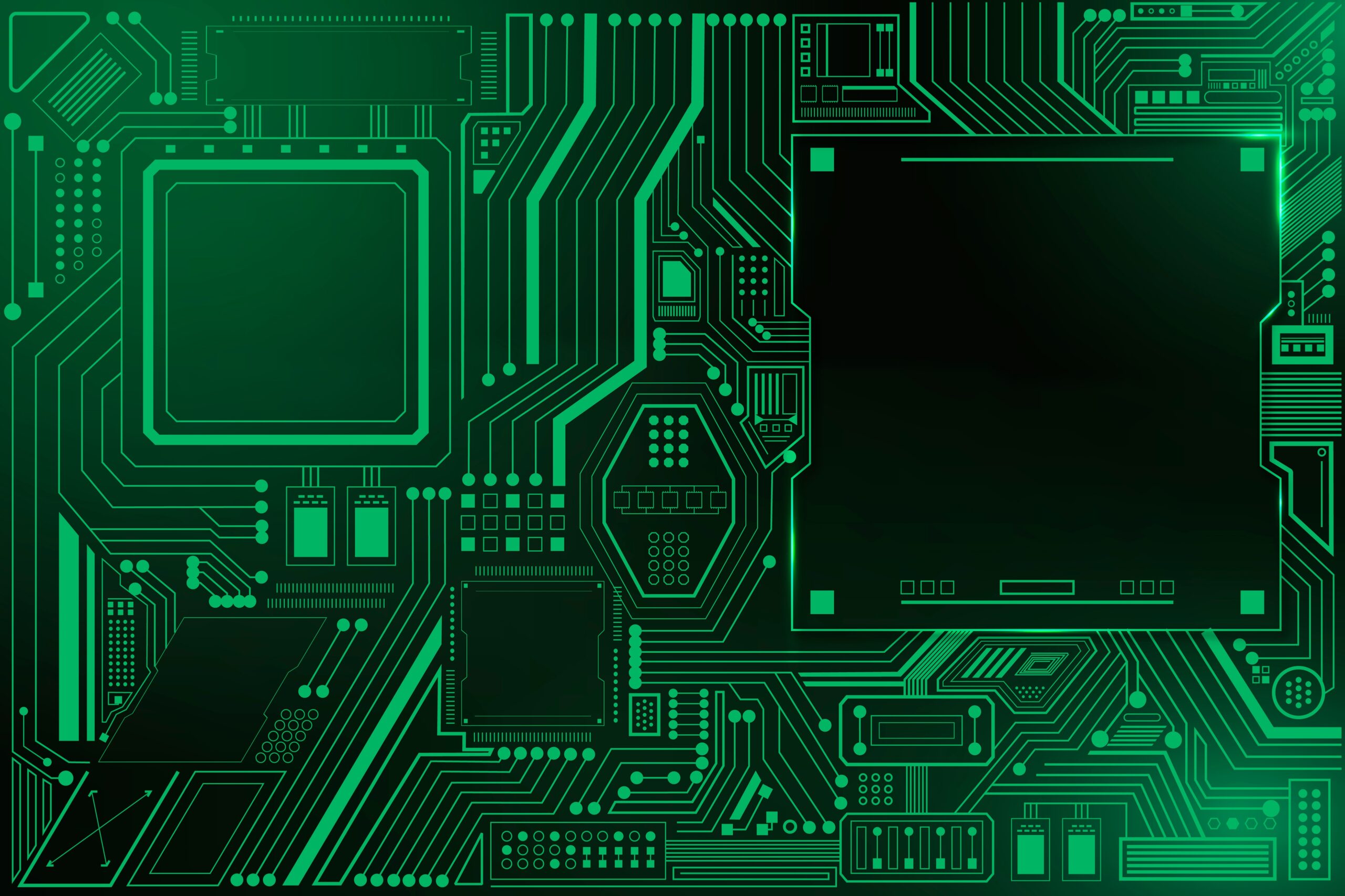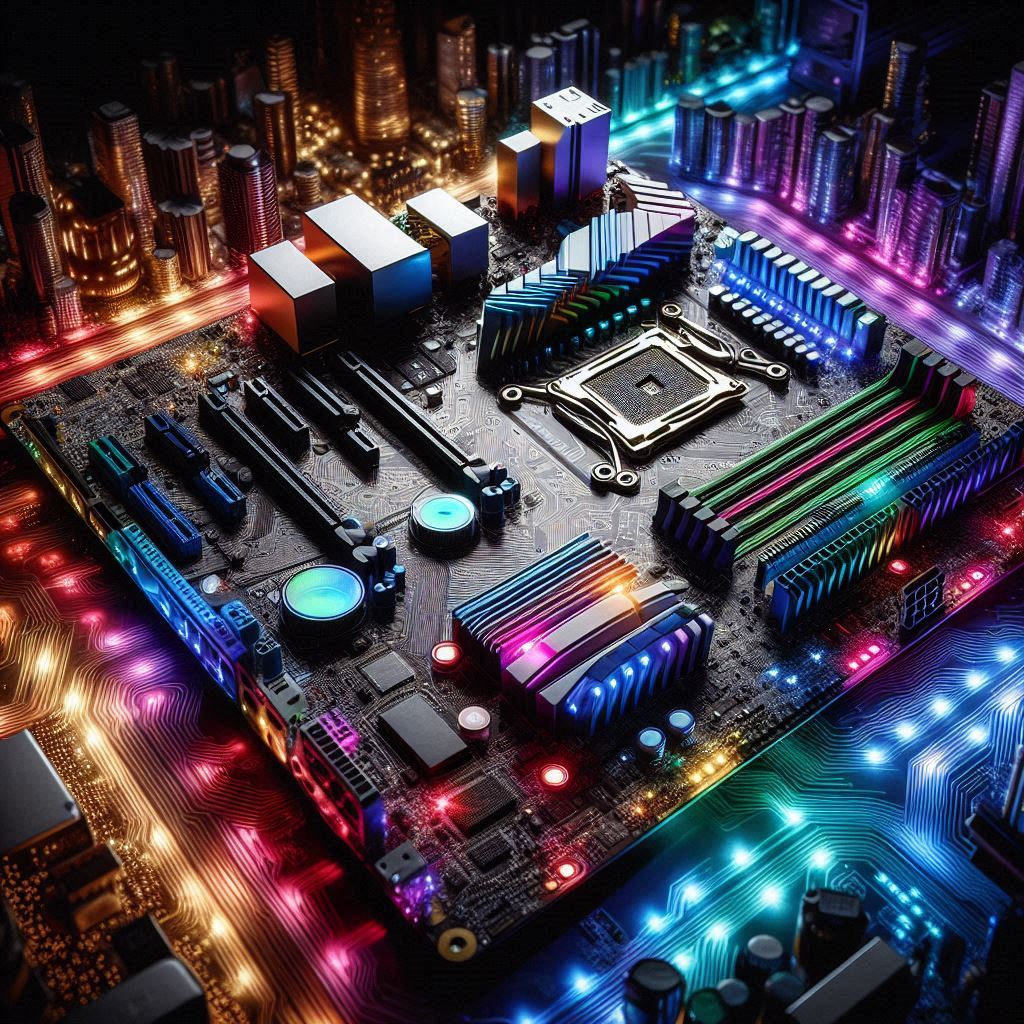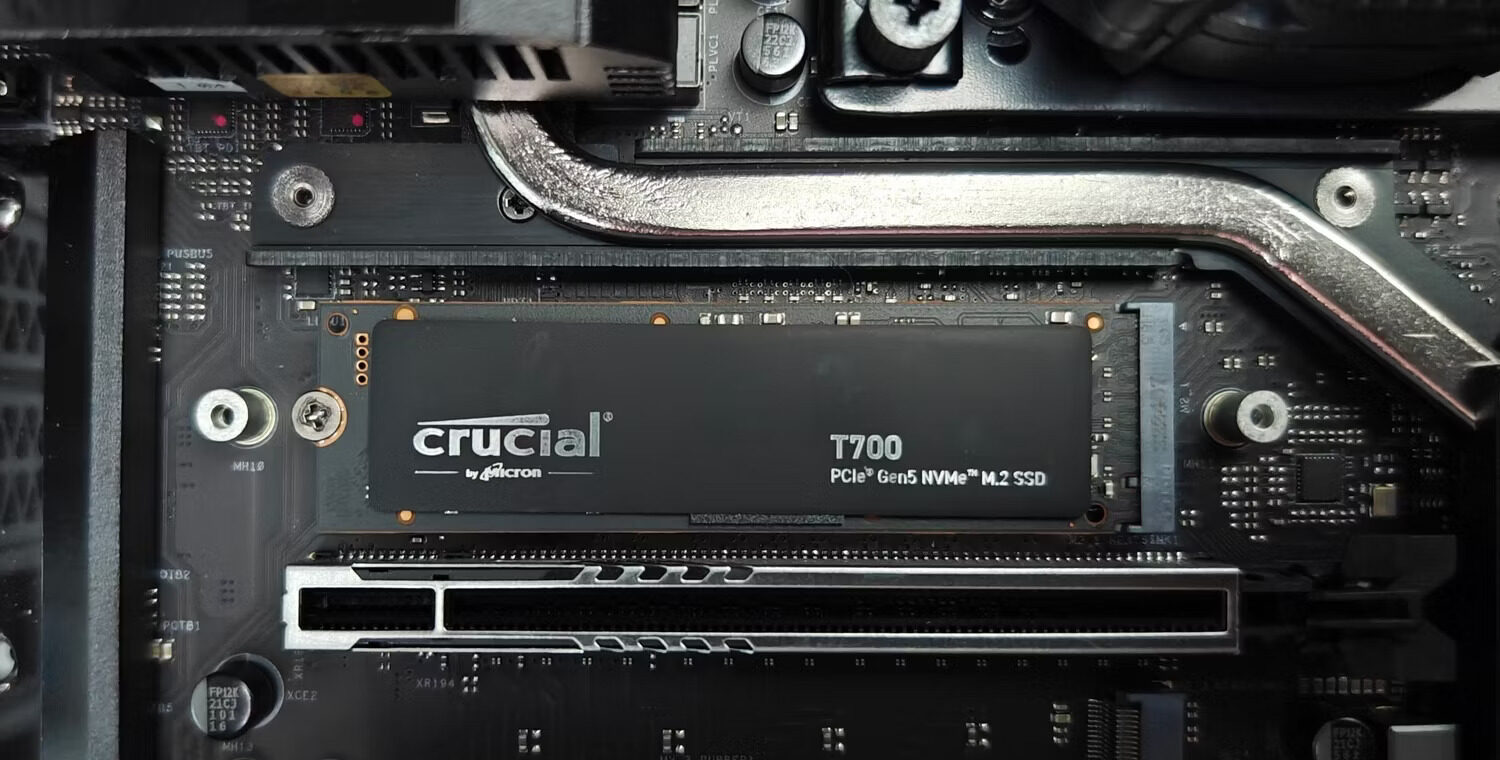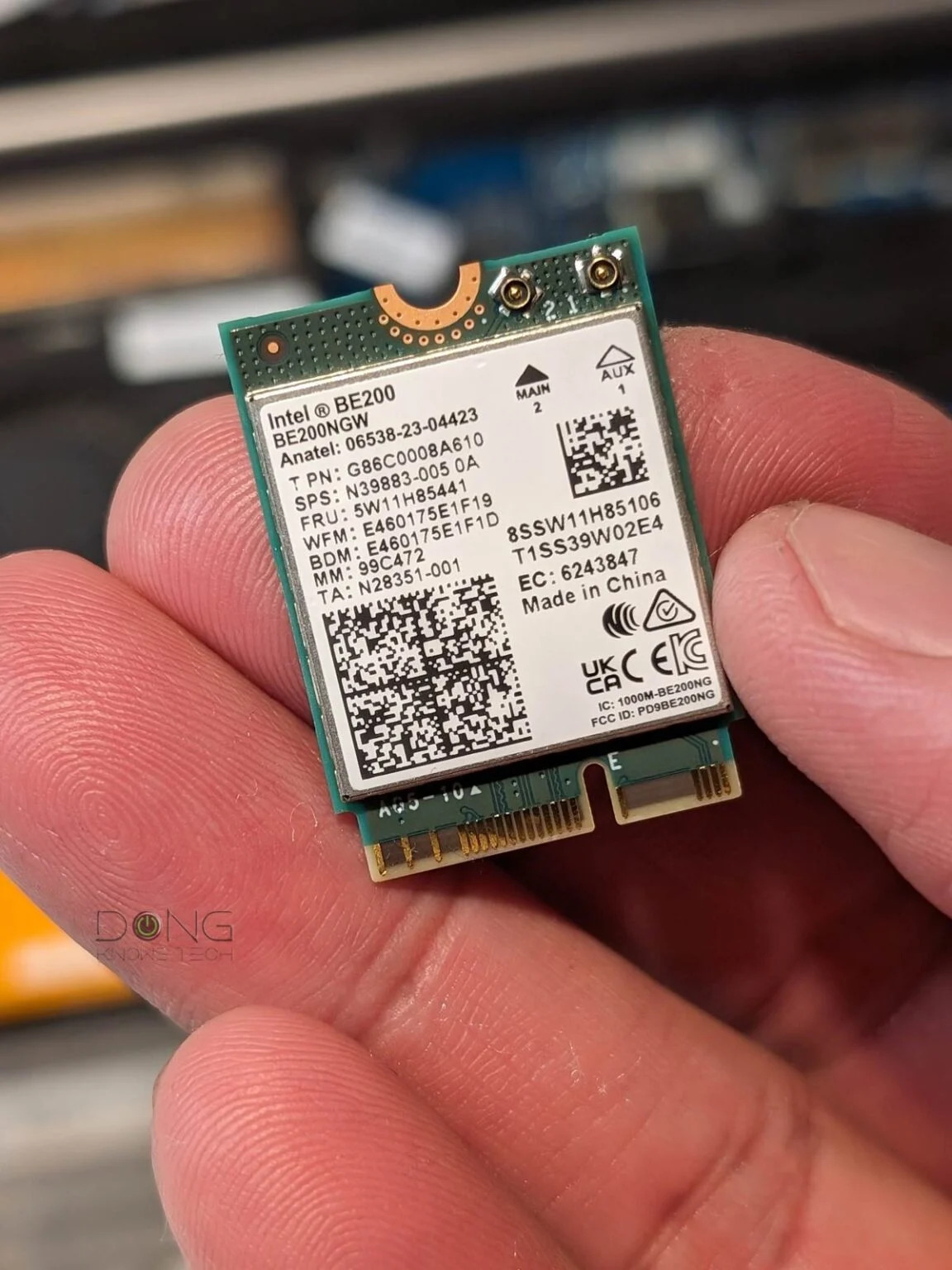Discuss how AI and machine learning are influencing motherboard design, from adaptive power management to enhanced overclocking features.
The Impact of AI on Motherboard Design: 8 Things What to Expect in Future Releases.
Table of Contents
The Impact of AI on Motherboard Design:
The Impact of AI on Motherboard Design is an increasingly important topic as artificial intelligence (AI) continues to shape the future of technology. As AI becomes more integrated into various aspects of computing, its influence on motherboard design is expected to be profound. Motherboards are the backbone of any computing system, connecting the critical components such as the CPU, RAM, and storage devices. As AI advances, the design and functionality of motherboards will evolve to meet the new demands of AI-driven applications and technologies. In this article, we’ll explore how AI is impacting motherboard design, what changes we can expect in future releases, and why this evolution matters to both consumers and the tech industry.

8 Things What to Expect in Future Releases
1. The Role of AI in Modern Computing
Before diving into the specifics of motherboard design, it’s essential to understand the broader context of AI in modern computing. AI is revolutionizing how we interact with technology, from voice-activated assistants and autonomous vehicles to advanced data analytics and machine learning algorithms. These applications require significant computational power, which, in turn, demands more from the hardware, including motherboards.
The impact of AI on motherboard design is driven by the need to support AI workloads efficiently. Traditional motherboards were not designed with AI in mind, but as AI continues to permeate various industries, motherboard manufacturers are adapting to meet these new requirements. AI workloads often involve large amounts of data processing, parallel computing, and the use of specialized hardware such as GPUs and AI accelerators. As a result, future motherboards will need to be optimized for these tasks.
2. AI-Optimized Chipsets
One of the most significant impacts of AI on motherboard design is the development of AI-optimized chipsets. Chipsets play a crucial role in the functionality of a motherboard, acting as the communication hub between the CPU, memory, and other components. As AI becomes more prevalent, manufacturers are focusing on developing chipsets that can handle the unique demands of AI workloads.
AI-optimized chipsets will likely feature improved support for parallel processing, enhanced data transfer speeds, and integration with AI accelerators. These accelerators, such as Google’s Tensor Processing Units (TPUs) and NVIDIA’s Tensor Cores, are designed specifically for AI tasks and can dramatically improve the performance of AI applications. By incorporating these capabilities directly into the motherboard, manufacturers can ensure that their products are ready for the next generation of AI-driven computing.
Additionally, these chipsets will need to support faster memory technologies, such as DDR5 RAM, which offers higher bandwidth and lower latency compared to previous generations. This will be critical for handling the large datasets often associated with AI tasks. Furthermore, improved power management and cooling solutions will be necessary to ensure that these high-performance components can operate efficiently and reliably.
3. Enhanced Data Handling and Connectivity
Another critical area where the impact of AI on motherboard design will be felt is in data handling and connectivity. AI applications often require the processing of vast amounts of data, both locally and from the cloud. This necessitates advancements in how motherboards handle data transfer and connectivity.
Future motherboards will likely feature improved support for high-speed data interfaces, such as PCIe 5.0 and beyond, which offer increased bandwidth for data-intensive tasks. This is particularly important for AI workloads that rely on fast data transfer between the CPU, GPU, and storage devices. Additionally, advancements in storage technologies, such as NVMe SSDs, will continue to play a crucial role in supporting the high-speed data access required by AI applications.
Connectivity is another area where the impact of AI on motherboard design will be significant. With the increasing reliance on cloud computing for AI tasks, motherboards will need to support faster and more reliable network connections. This includes the integration of Wi-Fi 6E and future wireless standards, as well as improved Ethernet capabilities, such as 10GbE or even 25GbE ports. These advancements will ensure that motherboards can handle the data demands of AI applications, both locally and over the network.
Moreover, the rise of edge computing, where data processing occurs closer to the data source rather than in centralized data centers, will also influence motherboard design. Edge devices require motherboards that can handle AI workloads locally, with minimal latency. This will drive the development of motherboards with built-in AI accelerators and advanced connectivity options, allowing them to perform AI tasks in real-time without relying on cloud resources.
4. AI-Driven Power Management
Power management is another area where the impact of AI on motherboard design will be profound. AI workloads are often power-intensive, requiring efficient power delivery and management to ensure optimal performance. As a result, future motherboards will need to incorporate AI-driven power management solutions that can adapt to the demands of AI tasks.
One way this could be achieved is through the use of AI algorithms to monitor and optimize power consumption in real-time. These algorithms can analyze the workload and adjust power delivery to different components as needed, ensuring that the system operates efficiently without sacrificing performance. For example, during periods of high AI processing, the motherboard could allocate more power to the GPU or AI accelerator while reducing power to less critical components.
Additionally, AI-driven power management could help extend the lifespan of components by reducing wear and tear caused by excessive power consumption. By dynamically adjusting power delivery based on workload demands, motherboards can operate more efficiently, generating less heat and reducing the risk of component failure.
AI could also play a role in improving cooling solutions on motherboards. By monitoring temperature data in real-time, AI algorithms can adjust fan speeds or activate additional cooling mechanisms as needed, ensuring that the system remains within safe operating temperatures even during intensive AI tasks. This could be particularly important for small form factor systems, where space for cooling solutions is limited.
5. AI-Enabled Diagnostics and Predictive Maintenance
The integration of AI into motherboard design will also enable more advanced diagnostics and predictive maintenance capabilities. Traditional diagnostics rely on manual monitoring and troubleshooting, but AI can automate this process, providing real-time insights into the health and performance of the motherboard and its components.
AI algorithms can monitor various aspects of the motherboard, such as temperature, power consumption, and data transfer speeds, to identify potential issues before they become critical. For example, if the motherboard detects an unusual spike in temperature or a drop in performance, it can alert the user to the issue and suggest corrective actions. This proactive approach can help prevent hardware failures and extend the lifespan of the system.
Predictive maintenance is another area where the impact of AI on motherboard design will be significant. By analyzing historical data and patterns, AI algorithms can predict when a component is likely to fail and notify the user in advance. This allows for timely maintenance or replacement, reducing the risk of unexpected downtime and ensuring that the system remains operational.
In addition to improving reliability, AI-enabled diagnostics and predictive maintenance can also enhance the user experience. By providing real-time insights and recommendations, these features can help users optimize their systems for AI workloads, ensuring that they get the best performance possible.
6. Customizable AI Features and Firmware
As AI continues to evolve, motherboard manufacturers are likely to offer customizable AI features and firmware options that allow users to tailor their systems to their specific needs. This could include AI-based tuning for overclocking, power management, and cooling, as well as specialized firmware designed to optimize performance for AI tasks.
For example, future motherboards might include AI-driven overclocking tools that automatically adjust CPU and GPU settings based on the user’s workload. These tools could analyze the performance requirements of AI applications and dynamically optimize the system for maximum efficiency and performance. This would make it easier for users to get the most out of their hardware without needing to manually tweak settings.
Customizable firmware could also enable users to prioritize certain AI tasks or workloads, ensuring that the system allocates resources effectively. For instance, a content creator might want to prioritize rendering tasks over other processes, while a data scientist might want to optimize the system for machine learning workloads. By offering these customization options, motherboard manufacturers can cater to a wider range of users and use cases.
Moreover, AI-driven firmware updates could be rolled out to improve performance and stability over time. As AI algorithms continue to learn and adapt, manufacturers could push updates that fine-tune the motherboard’s performance based on real-world usage data. This would ensure that users continue to benefit from the latest advancements in AI technology, even after their motherboard has been installed.
7. Impact on Consumer and Enterprise Markets
The impact of AI on motherboard design will be felt across both consumer and enterprise markets. In the consumer space, AI-driven features and optimizations will make it easier for users to build and maintain high-performance systems, whether for gaming, content creation, or other AI-intensive tasks. As AI becomes more integrated into everyday computing, consumers will benefit from motherboards that are designed to handle these workloads efficiently.
In the enterprise market, the impact will be even more pronounced. Businesses are increasingly relying on AI for tasks such as data analysis, predictive modeling, and automation. As a result, enterprise-grade motherboards will need to be optimized for AI workloads, offering enhanced performance, reliability, and scalability. This could lead to the development of specialized motherboards for AI-focused servers and workstations, designed to handle the unique demands of these applications.
Moreover, as AI continues to drive innovation in industries such as healthcare, finance, and manufacturing, the demand for AI-optimized hardware will only grow. Motherboard manufacturers that can deliver products that meet these needs will be well-positioned to capitalize on this trend.
8. The Future of AI and Motherboard Design
As we look to the future, the impact of AI on motherboard design is likely to continue evolving. AI will play a central role in driving innovation across the tech industry, and motherboards will need to adapt to keep pace with these changes. We can expect to see further advancements in AI-optimized chipsets, data handling, connectivity, power management, diagnostics, and customization.
In addition to these technical advancements, AI could also influence the design and layout of motherboards themselves. As AI-driven applications become more common, we may see motherboards that are specifically designed to accommodate AI accelerators, with dedicated slots and cooling solutions for these components. This could lead to new form factors and designs that prioritize AI performance over traditional computing tasks.
Furthermore, as AI continues to improve, we may see even greater levels of automation and optimization in motherboard design. AI could be used to streamline the manufacturing process, optimize component placement, and even predict consumer demand for certain features. This could lead to more efficient production and lower costs, ultimately benefiting both manufacturers and consumers.

Conclusion
The Impact of AI on Motherboard Design is a transformative force that will shape the future of computing. As AI continues to advance, motherboard manufacturers are adapting their designs to meet the demands of AI-driven applications. From AI-optimized chipsets and enhanced data handling to AI-driven power management and diagnostics, the integration of AI into motherboard design will lead to more efficient, powerful, and reliable systems.
As consumers and businesses increasingly rely on AI for a wide range of tasks, the demand for AI-optimized motherboards will continue to grow. By understanding the impact of AI on motherboard design, users can make informed decisions when building or upgrading their systems, ensuring that they are ready for the future of AI-driven computing.
In summary, the impact of AI on motherboard design will be profound, driving innovation and enabling new capabilities in both consumer and enterprise markets. As AI continues to evolve, so too will the motherboards that support it, leading to more powerful and efficient computing systems that can meet the demands of the next generation of AI applications.
Featured Images on Top : Freepik






This is my first time pay a quick visit at here and i am really happy to read everthing at one place
Great information shared.. really enjoyed reading this post thank you author for sharing this post .. appreciated
This was beautiful Admin. Thank you for your reflections.
I am truly thankful to the owner of this web site who has shared this fantastic piece of writing at at this place.
This is really interesting, You’re a very skilled blogger. I’ve joined your feed and look forward to seeking more of your magnificent post. Also, I’ve shared your site in my social networks!